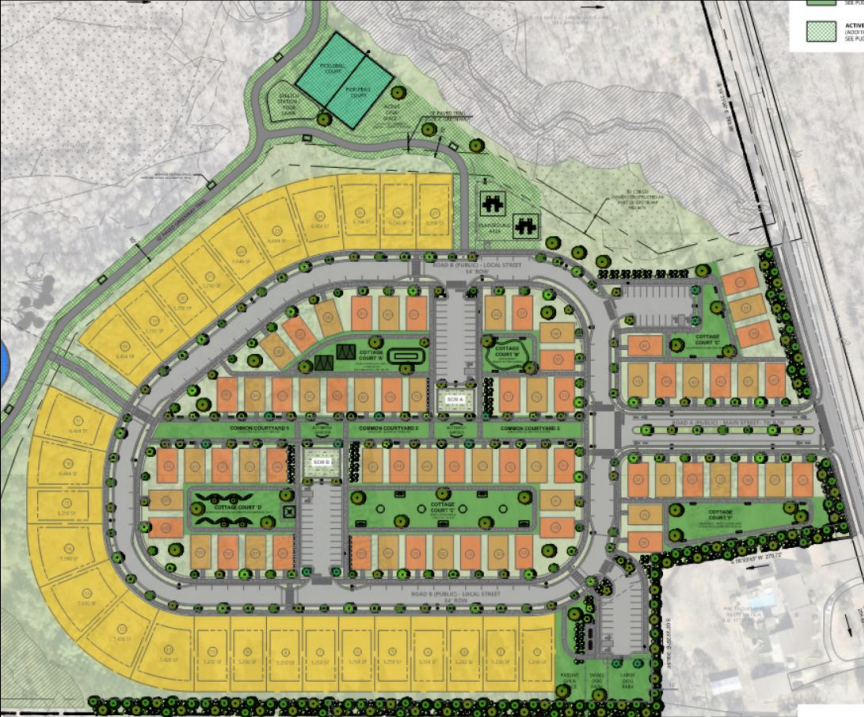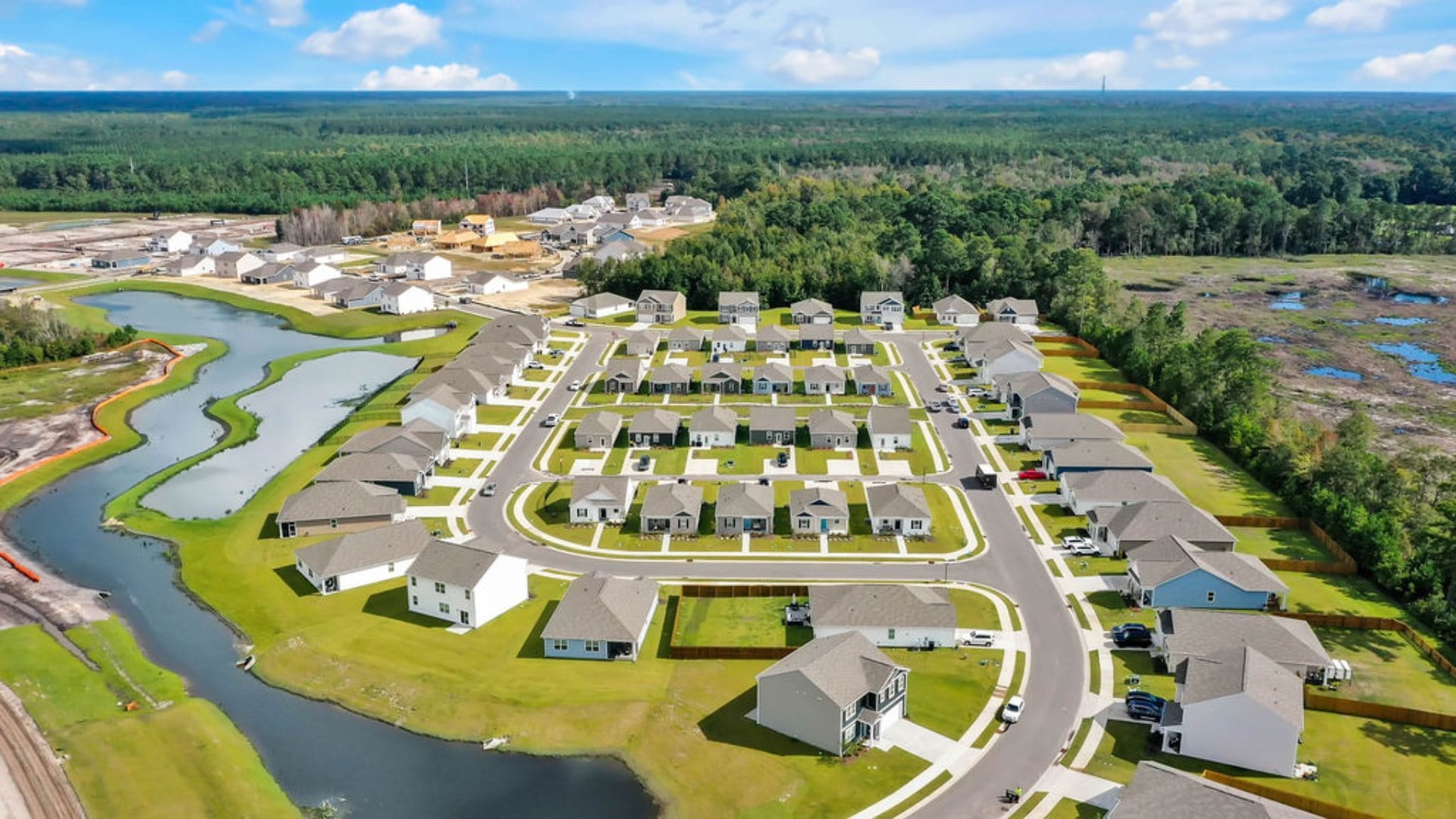Policy
D.R. Horton Scores A Victory In North Carolina Local Zoning Bid
Knightdale’s approval of a Horton's cottage court plan shows how local vision and builder flexibility can align—just ahead of sweeping reforms.

In a summer marked by rapid legislative change and rising local ambition, the Raleigh suburb of Knightdale has carved its path for missing middle housing amid high-stakes drama over housing and land-use authority in the state legislature.
D.R. Horton, America’s largest homebuilder, recently won unanimous approval from Knightdale’s Town Council for a mixed-income “cottage court” development with 68 compact cottage homes surrounded by 27 tightly knit front-load single-family homes.
About 15 miles west at the state capitol, lawmakers are hashing out a sweeping “Save the American Dream Act,” set for statewide housing reform unlike any in recent memory.
Just as has been happening across the country, the Tar Heal State's proposed legislation strives to limit local government’s authority in zoning and ease approval processes to address a housing crisis across the state.
Despite what state lawmakers are attempting to do, cities around the state have been making changes to spur housing supply on their own. Charlotte, Raleigh, and Durham have all revised zoning to allow missing middle housing, though not without lawsuits and challenges, even as development proceeds.
Knightdale, a fast-growing town of 21,000, has acted early, setting its course ahead of potential state-mandated changes.
Attainable homes remain a focus for homebuilders and municipalities alike," Cristi Green, division vice president of operations for D.R. Horton’s Raleigh North division, said in a statement to The Builder's Daily."Other D.R. Horton markets have seen success with these cottage-style homes that combine a single-family design with efficient square footage and exterior charm in desirable locations.
The Knightdale subdivision will be its first in the Raleigh region, but not in the state. In Wilmington, NC, for example, D.R. Horton built The Cottages at Blake Farm, a subdivision plan nearly identical to the Knightdale project.
Pricing in a new phase starts at nearly $300,000, which is lower than the $417,000 median home price Zillow shows for Wilmington. Raleigh's median home price is about $450,000.

Local Vision Meets Willing Builder
D.R. Horton’s project plays out against the backdrop of Knightdale’s own carefully crafted future enshrined in its “KnightdaleNext 2035” comprehensive plan. Created in 2018 and updated in 2024, the plan’s vision calls for walkable streets, conservation of natural features, and a diverse mix of housing to serve a growing region.
It prioritizes form and design over land-use and density to guide development in a “thriving urban small town that is setting its sights on new opportunities for mixed-use activity centers, premium bus rapid transit, and major employment centers.
Though describing itself as an urban small town, Knightdale grew with the traditional suburban residential development.
Part of the plan includes “suburban retrofit,” which calls for converting existing development into mixed-use along transit-oriented corridors. It also focuses on mixed-use development that consists of a mix of housing types such as duplexes, triplexes, townhomes, and accessory dwelling units.
D.R. Horton’s master plan advances this vision, weaving greenways, rain gardens, and public gathering spaces into its streetscape. It nods toward the community’s desire for both growth and stewardship, a balancing act increasingly scrutinized in fast-growing suburbs ringing the Raleigh metropolitan area.
It will be a conservation subdivision, meaning that a third of the 32 acres will be preserved and undeveloped, another key element of the town’s comprehensive plan.
The cottage homes will range in size from 1,000 square feet to 1,200 square feet, falling into the starter home category.
D.R. Horton’s plan, however, didn’t sail through the approval process. Knightdale’s land-use review board said in June that the request was not “reasonable nor in the public interest, as it fails to support the guiding principles of the KnightdaleNext Comprehensive Plan.”
After the rejection, the builder made several changes to the proposal. The revised plan provided two parking spots per unit, which included both parking lots and on-street parking. The builder also improved the traffic calming features. Following these changes, the Knightdale planning officials recommended approving the plan.
The cottage design is very unique,” Mayor Pro Tem Steve Evans said in the council meeting. “They have come up with a pretty successful plan to add to the creative mix here in Knightdale.”
Knightdale’s approval reveals the tension—and opportunity—at hand. Consultants, planners, and D.R. Horton itself highlighted public connectivity, preservation, and amenity-rich design. Their gambit: embrace the higher density but deliver it in a way that recognizes and memorializes local character and the landscape.
A Glimpse Into North Carolina’s Housing Future
If the “Save the American Dream Act” accelerates the pace and scale of such developments, Knightdale’s cottage court subdivision may become one more template for how localities adapt.
Supporters call it a timely antidote to regulatory logjams; critics fear a race to the bottom as local sway loses its tenacious grip on what gets developed and where.
For now, as ground breaks and residents envision life along greenways and cottage clusters, the verdict rests on execution. Can builders, planners, and new state rules work in concert to advance both affordability and place-making?
Knightdale’s answer may offer early clues as North Carolina—and the nation—wrestles with its future neighborhood by neighborhood, and block by block.
MORE IN Policy
Homebuilders Urged To Invest In Frontline Jobsite Workers Now
As homebuilding slows, workforce investment becomes the make-or-break factor for long-term capacity. Building Talent Foundation CEO Branka Minic warns that cutting training and career-path spending now will deepen the industry’s structural labor crisis for years to come.
NYC Voters Back Affordability — Now Comes The Hard Part
New Yorkers have voted for change. Four sweeping housing charter amendments promise faster reviews, digital mapping, and more affordability—but the real battle begins as City Hall, the Council, and Albany clash over control.
Connecticut Lawmakers Reboot Bid To Hurdle Blocks To Building
After a vetoed bill derailed housing reform this summer, Connecticut lawmakers are back with a compromise. Their second attempt could test whether state leaders can balance affordability goals with local control—and finally get a deal done.
